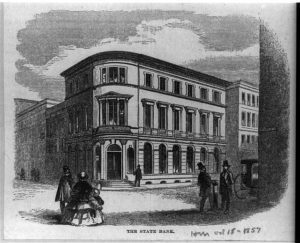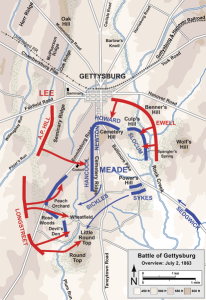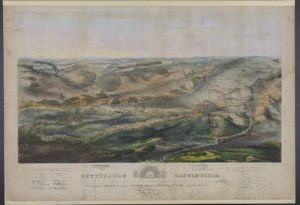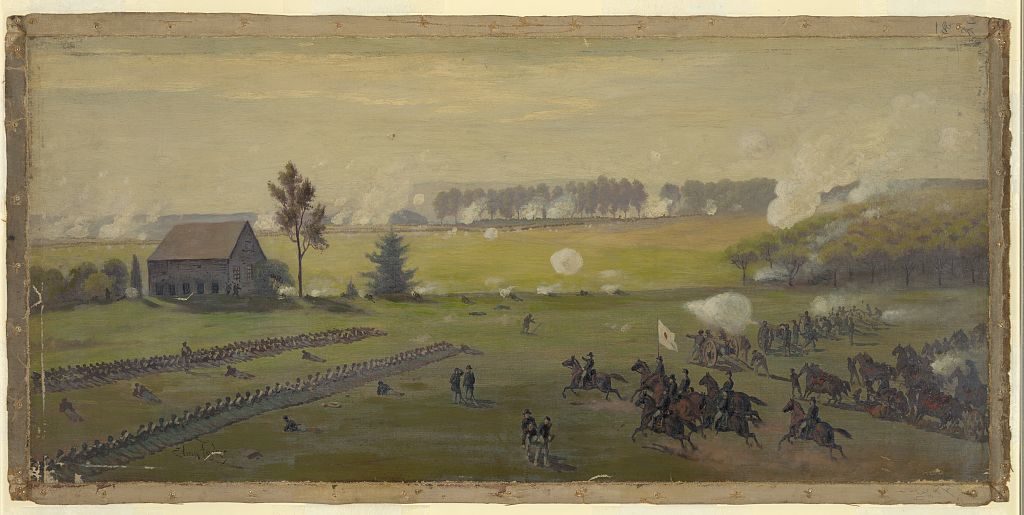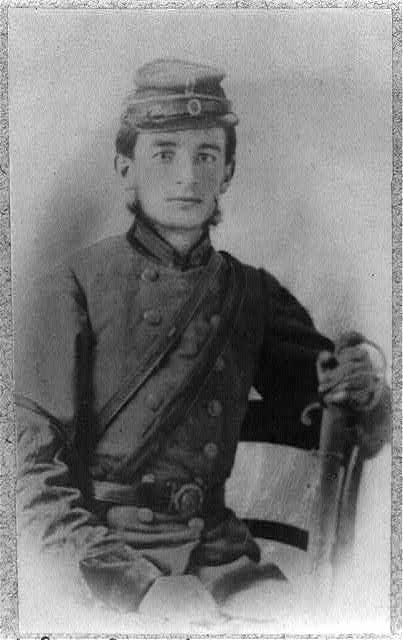After the war General Daniel Sickles commanded the army in South Carolina area. On March 11, 1867 he was appointed commander of the second military district (North and South Carolina) under Congress’s Reconstruction Acts. 150 years ago today he halted a parade in Charleston until an American could be procured and displayed. He detailed exactly how the marchers were to respond to the national banner.
From The New-York Times April 28, 1867:
Fireman’s Parade at Charleston, S.C. – No Stars and Stripes in the Procession – Gen. Sickles Stops the Parade until one is Procured.
CHARLESTON, S.C., Saturday, April 27.
The annual parade of the Fire Department of Charleston was to have taken place this morning at 10 o’clock. The procession was about starting, but here [sic] being a total absence of an American flag in the column, notwithstanding the great number of all sorts of other banners, Gen. SICKLES addressed the Post Commandant, Brevet Brig. Gen. CLITZ, the following letter, and ordered the column not to move until the requirements of this letter were complied with:
GENERAL: You remember the regrets we expressed to prominent citizens on the day of the last firemen’s parade, that the American flag was not seen in the column. It was then said to have been an inadvertant omission. It is reported to me this morning that among the various emblems borne by the several companies at the rendezvous on the citadel parade ground the flag is not there. I desire that you will at once send for the Chief of the Fire Department, and inform him that the national standard must be borne in front of the column; that an escort of honor, to consist of two members of each company present, will be detailed by himself to march with the colors; that the colors be placed opposite the reviewing personages on the ground designated for review, and that every person in the column shall salute the colors by lifting his hat or cap on arriving at the point three paces distant from the colors, and carrying the cap uplifted, marching past the colors to the point three paces distant from the same.
The Mayor of the city, the Chief of the Fire Department and the foremen of the companies will be held responsible for the observance of this order, and they are hereby authorized and required to arrest any person who disobeys it. You will take such measures as you may find to be necessary to insure the execution of this order. Very respectfully,
D.E. SICKLES, Major-General Commanding.
To Brevet Brig. Gen. H.B. CLITZ, United States Army. Commanding Post of Charleston, S.C.
Official: J.W. CLOUS, Captain Thirty-eighth Infantry, Acting Assistant Adjutant-General.
When informed of this order by Gen. KLITZ, the Chief of the Fire Department expressed, on behalf of the Fire Department, cheerful obedience, and the procession is now waiting until an American flag can be procured.
Later.
A flag has been procured and the procession is now moving.
An editorial denied that General sickles’ order was arbitrary authoritarianism. The commandant knew best. From the May 25, 1867 issue of Harper’s Weekly (page 323):
MAJOR-GENERAL SICKLES AND THE FLAG.
THE action of General SICKLEs in ordering the National flag to be carried and respected by the Firemen’s procession in Charleston has been severely criticised by the Copperheads as the “iron heel,” and by some Union papers as an unnecessary and therefore impolitic stretch of authority. Now it is precisely such details of conduct which can not be judged at a distance. The wisdom or impolicy of such an order depends entirely upon the information of the commander upon the spot. Of course it seemed at first sight harsh that the General should have ordered the flag to be borne in a procession which, as it was reported, never carried any flag. It appeared to be as arbitrary as an order to any private person or corporation to display the flag upon his dwelling-house or office. But if the General had issued such an order as that, have we not had experience enough to know that probably it would not have been without reason?
So it proves in the present case. It appears that at the Firemen’s parade of last year the American flag was not seen; the General expressed his regrets, and the omission was reported to him by the authorities and citizens as an inadvertence. When the column was assembling upon this occasion, instead of appearing without flags or emblems, which was stated to be the rule, the companies carried various emblems, but the American flag was omitted. The Stonewall Fire Engine Company appeared in the rebel gray uniform, and with a full-sized portrait of STONEWALL JACKSON suspended over their engine. It was plain that the parade was to be a covert ovation in memory of the rebellion, and the Major-General of the United States commanding the district therefore said to the proper authorities: “I shall not forbid the honor you wish to show in this way to a man whom you respect, but it certainly shall not be done at the expense of the honor of the United States; you will also carry and respect the National flag.”
Such an act of firmness shows to the mourners of the “lost cause” that the United States are in earnest. When a State is under military rule it is so because the State is in a condition in which words and forms are deeds. The commanding General, who understands exactly what public demonstrations mean, is the best judge what shall be allowed to be said and done.
Authority is an interesting thing. It’s already been almost four years since Day 2 at the Battle of Gettysburg. Without General Meade’s authorization General Sickles moved his Third Corps to the Peach Orchard about .7 miles ahead of the main Union line on Cemetery Ridge. A salient was born. Although the Third Corps was routed and Sickles lost his leg, some historians believe the unexpected position in the Peach Orchard may have confounded and somewhat disrupted the rebel assault.
April 28th: Yesterday I forgot to mention what originally forgot to mention last month. Thomas Nast’s cartoon of the firemen venerating the Stonewall Jackson portrait reminded me that On March 24, 1867 John Decatur Barry died. It is written that at the time Major Barry gave the order to fire that wounded Stonewall Jackson at Battle of Chancellorsville. According to the Wikipedia link “Some of his friends and family said that Barry “died of a broken heart” for his role in Jackson’s death.” The North Carolinian was 27 tears old when he died.

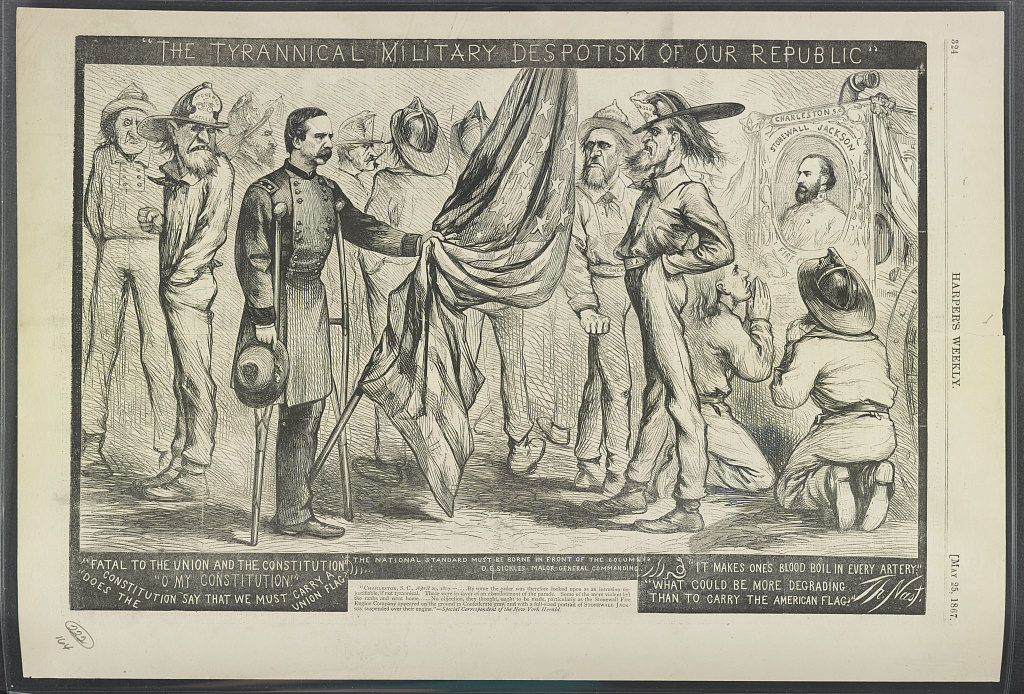
![Major General Daniel Edgar Sickles of 70th New York Infantry Regiment and General Staff U.S. Volunteers Infantry Regiment in uniform] / From negative in Brady's National Portrait Gallery (LOC: https://www.loc.gov/item/2016646188/)](https://www.bluegrayreview.com/wp-content/uploads/2017/04/40654v-183x300.jpg)

